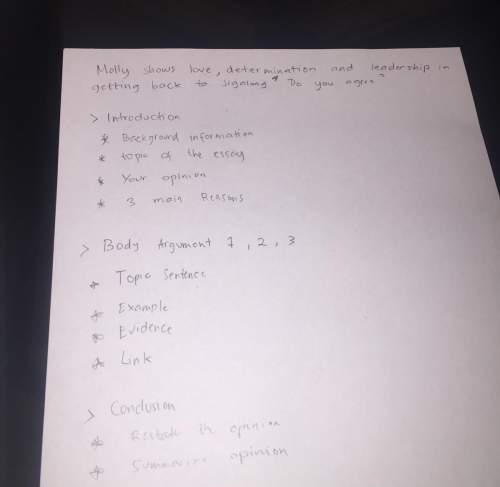
English, 19.08.2019 19:10, ayoismeisalex
In its 1903 decision in the case of lone wolf v. hitchcock, the united states supreme court rejected the efforts of three native american tribes to prevent the opening of tribal lands to non-indian settlement without tribal consent. in his study of the lone wolf case, blue clark properly emphasizes the court’s assertion of a virtually unlimited unilateral power of congress (the house of representatives and the senate) over native american affairs. but he fails to note the decision’s more far-reaching impact: shortly after lone wolf, the federal government totally abandoned negotiation and execution of formal written agreements with indian tribes as a prerequisite for the implementation of federal indian policy. many commentators believe that this change had already occurred in 1871 when—following a dispute between the house and the senate over which chamber should enjoy primacy in indian affairs—congress abolished the making of treaties with native american tribes. but in reality the federal government continued to negotiate formal tribal agreements past the turn of the century, treating these documents not as treaties with sovereign nations requiring ratification by the senate but simply as legislation to be passed by both houses of congress. the lone wolf decision ended this era of formal negotiation and finally did away with what had increasingly become the empty formality of obtaining tribal consent.
the author of the passage is primarily concerned with
a. identifying similarities in two different theories
b. evaluating a work of scholarship
c. analyzing the significance of a historical event
d. debunking a revisionist interpretation
e. exploring the relationship between law and social reality

Answers: 3
Other questions on the subject: English

English, 21.06.2019 16:00, syulerio8418
Which sentence uses the past tense of to study correctly? a. mark is studying for his math test with margie. b. mark will study for his math test with margie. c. mark studied for his math test with margie.
Answers: 2


English, 22.06.2019 01:50, jurnee77
Plagiarism quiz read both the paragraph below and the information following it that identifies the source using the american psychological association format. then read each of the numbered statements and determine if each is plagiarized or not. circle “yes” if the statement is plagiarized, “no” if it is not, and then fix the “yes” answers). original source the presence of the taiwanese on everest was a matter of grave concern to most of the other expeditions on the mountain. there was a very real fear that the taiwanese would suffer a calamity that would compel other expeditions to come to their aid, risking further lives, to say nothing of jeopardizing the opportunity for other climbers to reach the summit. but the taiwanese were by no means the only group that seemed egregiously unqualified. camped beside us at base camp was a twenty-five-year-old norwegian climber named peter neby, who announced his intention to make a solo ascent of the southwest face, one of the peak’s most dangerous and technically demanding routes—despite the fact that his himalayan experience was limited to two ascents of neighboring island peak, a 20,274-foot bump that required little more than vigorous walking. krakauer, j. (1998). into thin air: a personal account of the mount everest disaster. new york: anchor books, 122 - 3. student samples yes 1. there was a very real fear that the taiwanese would suffer a calamity that would compel other expeditions to come to their aid(krakauer, 1998). no) 2. many climbers overestimate their abilities, as krakauer (1998) explains when he writes of peter neby, whose himalayan experience in the past “required little more than vigorous walking” (122 - 3). no 3. jon krakauer (1998) discusses other concerns besides those of unpredictable weather and his own climbing group’s capabilities. for example the existence of a taiwanese group on everest was a matter of serious unease to most everyone else on the mountain. yes/no 4. krakauer (1998) states that the taiwanese group was not the only inexpert climbers to attempt mt. everest: camped beside us at base camp was a twenty-five-year-old norwegian climber named peter neby. . [whose] himalayan experience was limited to two ascents of neighboring island peak, a 20,274-foot bump that required little more than vigorous walking (122 – 3). yes/no 5. the author asserts that the taiwanese “were by no means the only group that seemed egregiously unqualified.” yes/no 6. in his book into thin air, jon krakauer (1998) discusses many of the dangers he noted prior to his disastrous attempt to climb mt. everest in 1996. among them were encounters with other groups and individual climbers who were ill-trained and ill-equipped to handle the demands of such a climb.
Answers: 2

English, 22.06.2019 05:00, kellynadine02
What do the sketches of 9/11 victims in "portraits of grief" achieve?
Answers: 1
Do you know the correct answer?
In its 1903 decision in the case of lone wolf v. hitchcock, the united states supreme court rejected...
Questions in other subjects:


Mathematics, 04.10.2019 23:20



History, 04.10.2019 23:20


Geography, 04.10.2019 23:20


Mathematics, 04.10.2019 23:20

English, 04.10.2019 23:20







